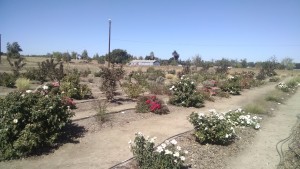Garden Travel -Plant Trial Evaluations
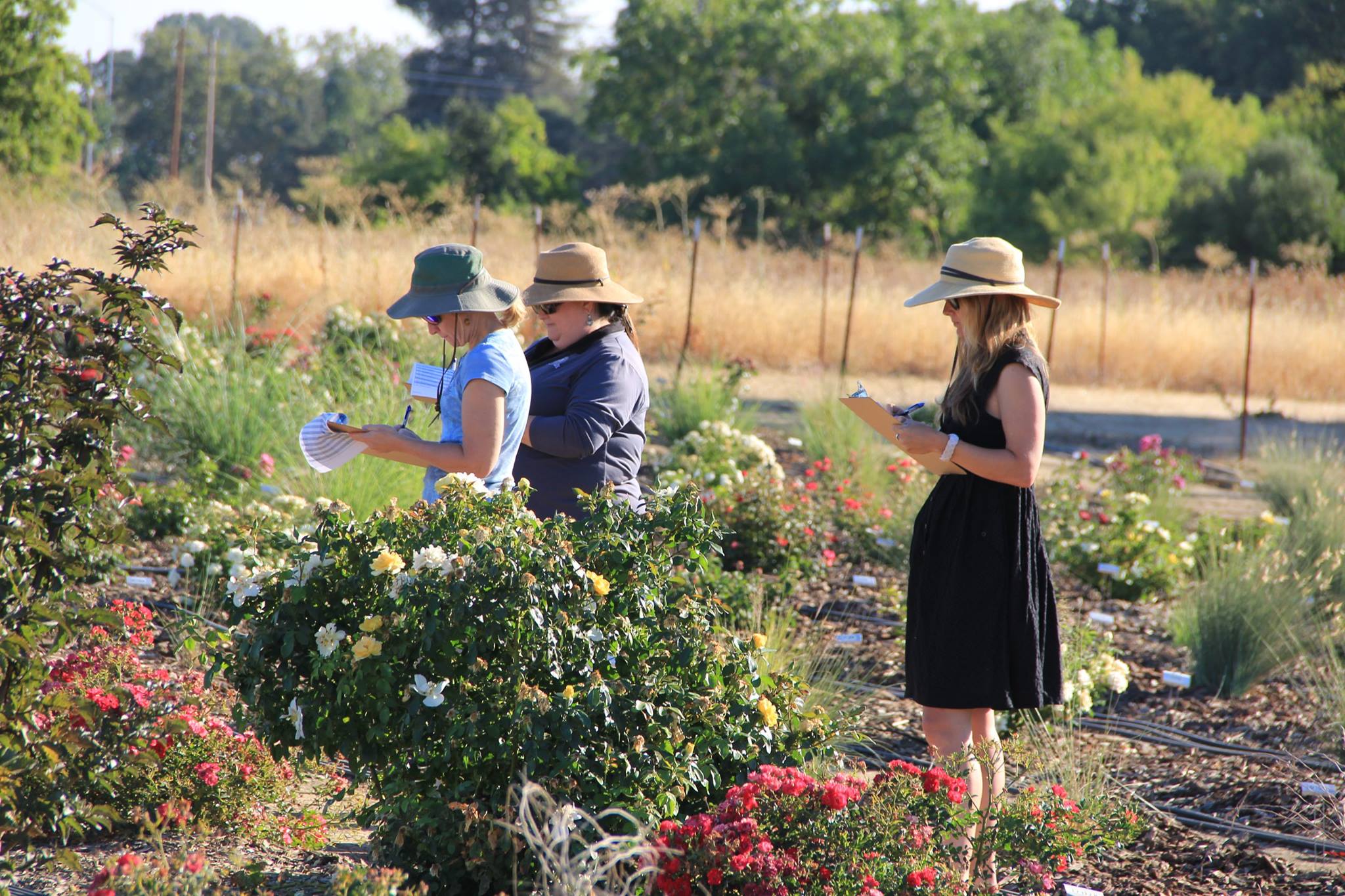
Garden Travel -Plant Trial Evaluations January 2nd, 2017
UC Davis Irrigation Plant Trial Evaluations
Late September I participated in in UC Davis California Center of Urban Horticulture Irrigation trials.
CCUH invites in evaluators from the industry: Contractors, designers, nurserymen as well as members of the Master Gardener program to evaluate plants that have been irrigated at different levels after the first year of establishment and how do plants really fare with deficit watering.
ET0, the total amount of water lost from a reference plant and the surrounding soil (tall fescue turfgrass). In Davis this is 55.91 inches in a year.
They planted 24 of each plant. Spaced 3’ apart. The first year of establishment they are watered of every 2 week 80% ET0 watering . A certain percentage of plants does not survive the first year for various reasons. The remaining plants are then separated into 4 watering regimens- Control (80% Et0), High(60% Et0), Moderate(40% Et0), Low (20% Et0)
An equal volume of water was applied at each irrigation equivalent to 50% of the soil’s water holding capacity in the root zone (about 20 gallons) to a depth of 18 inches. The frequency of the irrigation was determined using a water budget for each treatment percentage of ET0:
Watering schedule Apr -Sept
• C- (control)- Full sun: every 2 weeks Shade 4x throughout the period
• H (High) Full sun: every 3 weeks Shade 3 cialis 20mg x
• M/I (Moderate)Full sun: every 4 weeks Shade 2 x
• L(low)- Full sun: 2x throughout the period Shade no supplemental irrigation applied
The evaluators perform the subjective evaluations of the plants 3x/year end of May July and Sept. Empirical evaluation such as size, pest resistance, vigor was evaluated by CCUH staff/students.
Each evaluator was given a sheet with plants to evaluate . Plant foliage, flower and overall appearance was evaluated on a scale of 1-5.
A couple of outstanding plants- in most cases I was hard pressed to tell the difference between those watered at 80% and those watered at 20%. Several of the rose leaves showed a bit more stress being later in the season but this was mainly seen only up close. I found it amazing that these plants at most we being watered every two weeks ( albeit for several hours) but goes to show that most of our landscape plants are overwatered and they really can look great with limited irrigation.
( some of my pictures did not come out so I linked to the Facebook posts about the plant discussed)
Drift Roses
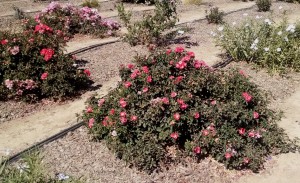
– truly drought tolerant low growing landscape roses looked great– especially the coral ( but the red looked good too) pretty consistent between varieties ( in contrast to Flower Carpet where some colors grow more upright than other)- Definitely will be my new choice for client garden
Ruellia
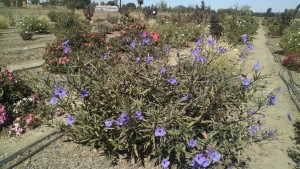
– Mayan Purple was a real standout but the White was also eye-catching especially back lit. (the smaller pink variety was also nice but did not have the impact that the large varieties did but it did stay smaller if that is the preferred size)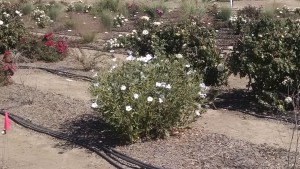
Bordeaux rose
Bordeaux rose also had a wow factor when it was in bloom but not all of the plants were not in full flower but after talking with others it would continue to bloom off and on throughout the year.
Bouteloua Blond Ambition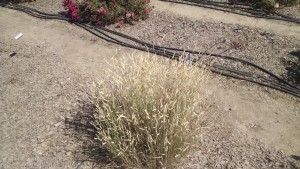
looked great all water levels- It looked great when I saw it in Santa Fe last week too….but my attempts to plant just the species have never been so successful. Trying again to see….
Mahonia Softcaress
excelled in the shade at almost all water levels. Definitely will be one of my new go to plants for shade.
Rosa Lone star
was covered in honeydew and had a bit of end of season stress but otherwise a vigorous shrub. (link is picture from May)
Sambucus ‘Black Tower’
looks like it could be a great background A plant with its dark large foliage but the foliage discoloration made upclose appearance undesirable. Pictures from August it looked a lot fuller and with less foliage damage. ( some of the foliage damage could be a combination issue of the summer heat and the boron in Davis water)
All the azaleas struggled – most werent evaluatable the rest looked sickly.
Full reports of the previous trials data can be view on the projects page of the California Center for Urban Horticulture. http://ccuh.ucdavis.edu/Projects/plant-trials
0 Comment





